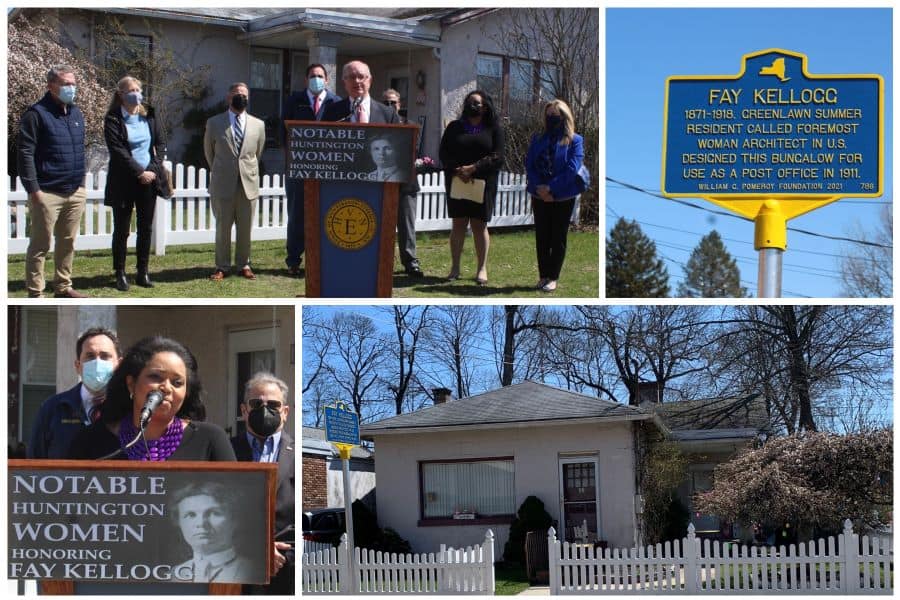Huntington officials unveiled a historical marker Tuesday to honor an early 20th Century female architect who was once known as ” “the foremost woman architect in the United States.”
The marker was placed outside the home at 22 Boulevard in Greenlawn where the groundbreaking Fay Kellogg spent her summers.
“Fay Kellogg designed and built steel construction projects while simultaneously breaking glass ceilings,” said Supervisor Chad A. Lupinacci. “We are proud to pay homage to Fay Kellogg, a pioneer in the field of architecture from over a century ago, at the site of the residence and former post office she was commissioned to design in 1911.”
She was born in Pennsylvania, studied in Washington, D.C. and at Pratt Institute in Brooklyn, and continued her studies in Paris. She lobbied to open the prestigious Ecole des Beaux Arts to women, but finished her studies before it opened.
She worked with architect John R. Thomas, where she helped design the Hall of Records on Chambers Street in Manhattan. After Thomas’s death, she set up her own architectural practice in 1903. She designed numerous buildings in New York and also a skyscraper in San Francisco as well as “hostess houses” on military bases in South Carolina, North Carolina, and Tennessee during World War I. She was the lead architect for all building projects nationwide for the American News Company. She usually supervised the construction of her designs.
In 1907 and 1909, Kellogg purchased land in Greenlawn totaling 15 acres. She spent six months a year in Greenlawn, raising chickens and commuting into the city.
In 1911, Kellogg was commissioned to design a new home and post office for Greenlawn’s postmaster Elizabeth A. Hilton. The bungalow provided living quarters for Hilton as well as space for the post office. After Hilton’s death in 1919, the building was sold to her sister Sarah Hilton, and continued as the post office for a few years until becoming just a residence.
Kellogg died at the age of 47 in July 1918.
Members of the Greenlawn-Centerport Historical Association and Town Historian Robert Hughes participated in the unveiling.

